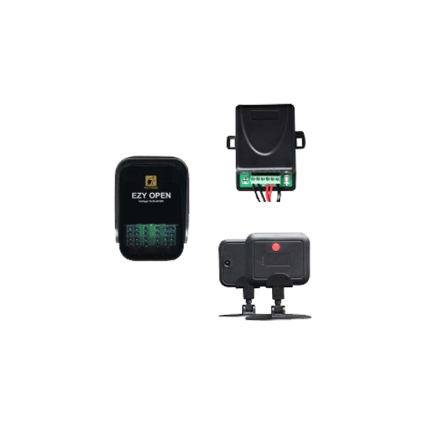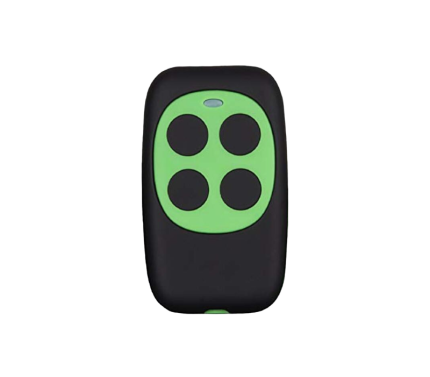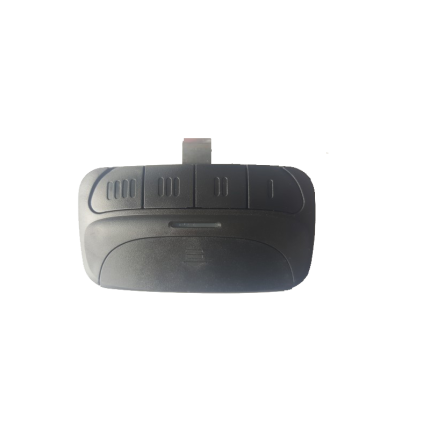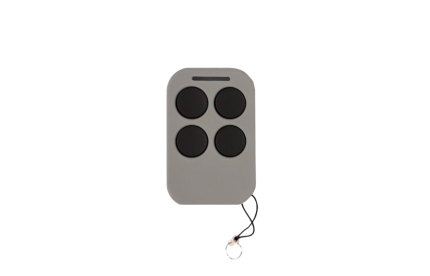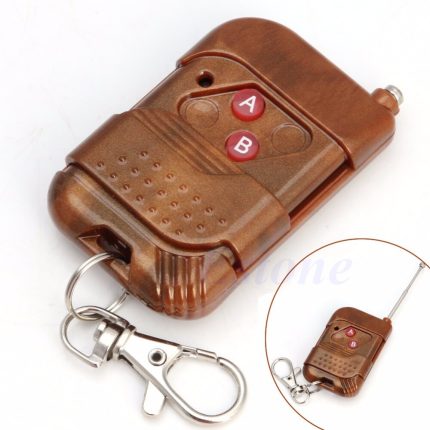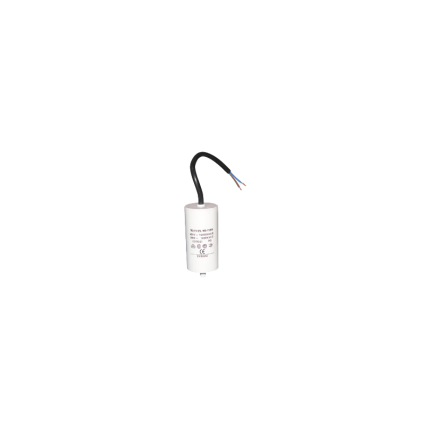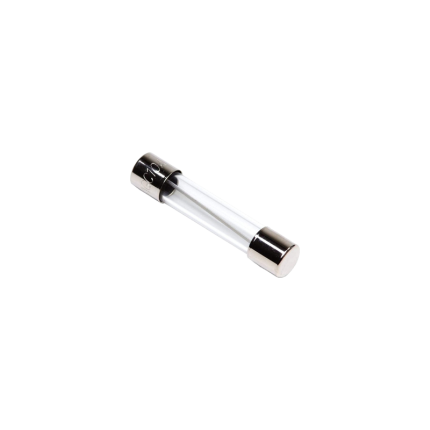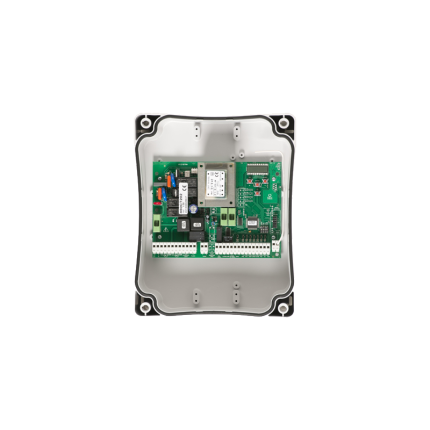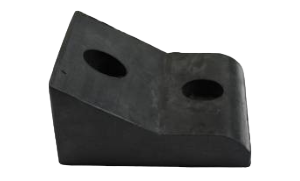Shop
Gate Opener Infrared Remote
Ship or pick up from our office.
Gate Opener Infrared Remote
An infrared remote for an automatic gate opener allows you to control your gate from a distance, while the infrared sensor provides safety by detecting obstacles and automatically reversing the gate's movement if an obstruction is encountered.Here's a breakdown:
-
Infrared (IR) Remote:This is a standard remote control, similar to those used for televisions, that transmits a signal to the gate opener using infrared light. You press a button on the remote, and it sends a coded signal to the gate opener's receiver, which then activates the gate motor.
-
Infrared (IR) Sensor:This sensor, often found near the gate, emits an infrared beam. If an object (like a person or car) breaks this beam while the gate is closing, the sensor detects the interruption and signals the gate opener to stop and potentially reverse its direction to prevent accidents.
-
Auto-Open/Close Functionality:Many automatic gate openers also have an "auto-close" feature, allowing you to set a timer for the gate to automatically close after a certain period (e.g., 5, 10, or 20 seconds). This adds convenience by eliminating the need to manually close the gate.
-
Remote Range:The range of the remote control can vary, but typical ranges are around 100 feet (30 meters). Some systems can handle a larger number of remote controls (e.g., up to 25).
-
Safety and Security:The infrared sensor adds a layer of safety to your gate system. The automatic reversing feature helps prevent accidents and property damage.
-
Other Features:Some automatic gate openers also include features like:
- Manual release: Allows you to manually open and close the gate in case of power outages or other emergencies.
- Overheating protection: The motor may have a built-in protection mechanism to prevent overheating.
- Multiple control options: Some systems can also be controlled via a wireless keypad or even through a smartphone app.
- Manual release: Allows you to manually open and close the gate in case of power outages or other emergencies.
Gate Opener Remote Control
Gate Opener Remote Control
Gate Opener Remote Control
Gate Opener Remote Control -C4
Ship or pick up from our office.
Gate Opener Remote Control -C4
*433 MHz
*2-4 Buttons
*More than 10 different designs
Key features and functions of a gate opener remote control:
-
Remote Operation:Enables opening and closing the gate from a distance, typically within a certain range (e.g., 100 feet).
-
Radio Signal Transmission:Emits a radio signal to the gate's receiver unit, initiating the gate's movement.
-
Compatibility:Most remotes are compatible with specific gate openers and require the same frequency to function.
-
Programming:Can be programmed with the gate's receiver unit, often involving a "learn" or "program" button on the gate opener.
-
Multiple Remotes:Many gate openers can be paired with multiple remotes, allowing multiple users to control the gate.
-
Universal Remotes:Some universal remotes can be programmed to work with different gate opener brands, as long as they are compatible.
-
Safety Features:Some gate openers incorporate safety features like sensors that detect obstructions and reverse the gate's movement.
Gate Opener Remote Control 1400FT315
Ship or pick up from our office.
Gate Opener Remote Control 1400FT315
*High-Range 1400ft *315 MHz *Compatible with HomeLink system on vehicles *1 channelGate Opener Remote Control 1400FT315/2-CH
Ship or pick up from our office.
Gate Opener Remote Control 1400FT315/2-CH
A high-range gate opener remote control 1400FT315/2-CH allows you to operate your gates from a greater distance than standard remotes, typically offering a range of several hundred feet or even up to a mile or more.
These remotes are often used in situations where the gate is located far from the entrance or when there are obstructions between the remote and the receiver.
Here's a more detailed explanation about Gate Opener Remote Control 1400FT315/2-CH:
What makes it high-range?
-
Stronger Transmitter:High-range remotes have a more powerful transmitter than standard remotes, allowing them to send a stronger signal over a longer distance.
-
Specialized Receiver:These remotes often work with a specialized receiver that is more sensitive and capable of picking up weaker signals.
-
Frequency:High-range remotes typically operate on a specific frequency (e.g., 433MHz or 315MHz) that is less prone to interference and allows for better transmission.
Benefits of high-range remotes like as the Gate Opener Remote Control 1400FT315/2-CH:
-
Increased Convenience:You can open your gate from a greater distance, which is particularly useful for large properties or when driving up to the gate.
-
Improved Security:High-range remotes can help prevent unauthorized access by allowing you to activate the gate from a safe distance.
-
Enhanced Flexibility:They can be used in a wider range of situations, such as when you need to open the gate for deliveries or visitors.
Factors affecting range:
-
Line of Sight:The range is usually maximized when there is a clear line of sight between the remote and the receiver.
-
Obstructions:Walls, trees, and other obstructions can reduce the range of the remote.
-
Weather Conditions:Extreme weather conditions like heavy rain or snow can also affect the range.
-
Antenna Placement:Proper placement of the antenna on the receiver can help improve the range.
Gate operator capacitor
Ship or pick up from our office.
Gate operator capacitor
A gate operator capacitor is an electrical component that assists the motor in a gate opener system to start and run smoothly.
It stores and releases electrical energy to provide the initial torque needed to get the motor going and to ensure consistent operation. These capacitors are crucial for both swing and sliding gate openers that are powered by AC.
Here's a more detailed explanation:
-
Starting the Motor:When a gate opener is activated, the motor needs a significant amount of power to begin rotating. The capacitor provides a burst of electrical energy to help the motor overcome its inertia and start moving.
-
Maintaining Smooth Operation:Once the motor is running, the capacitor helps to smooth out the electrical current, ensuring consistent and efficient operation. This prevents the motor from stalling or experiencing performance issues due to voltage fluctuations.
-
Types of Capacitors:Gate operator capacitors can be categorized as either start capacitors or run capacitors.
- Start capacitors: are used to provide the initial surge of power needed to get the motor rotating.
- Run capacitors: help to maintain consistent motor performance during operation.
- Start capacitors: are used to provide the initial surge of power needed to get the motor rotating.
-
Common Applications:Capacitors are used in various gate operator systems, including:
- Swing gate openers
- Sliding gate openers
- Commercial and residential gate systems
- Barrier arms
- Overhead doors
- Swing gate openers
-
Compatibility:Different gate operators may require specific types and sizes of capacitors, so it's important to choose the right replacement capacitor for your system.
Gate operator capacitor
Ship or pick up from our office.
Gate operator capacitor
A gate operator capacitor is an electrical component that assists the motor in a gate opener system to start and run smoothly.
It stores and releases electrical energy to provide the initial torque needed to get the motor going and to ensure consistent operation. These capacitors are crucial for both swing and sliding gate openers that are powered by AC.
Here's a more detailed explanation:
-
Starting the Motor:When a gate opener is activated, the motor needs a significant amount of power to begin rotating. The capacitor provides a burst of electrical energy to help the motor overcome its inertia and start moving.
-
Maintaining Smooth Operation:Once the motor is running, the capacitor helps to smooth out the electrical current, ensuring consistent and efficient operation. This prevents the motor from stalling or experiencing performance issues due to voltage fluctuations.
-
Types of Capacitors:Gate operator capacitors can be categorized as either start capacitors or run capacitors.
- Start capacitors: are used to provide the initial surge of power needed to get the motor rotating.
- Run capacitors: help to maintain consistent motor performance during operation.
- Start capacitors: are used to provide the initial surge of power needed to get the motor rotating.
-
Common Applications:Capacitors are used in various gate operator systems, including:
- Swing gate openers
- Sliding gate openers
- Commercial and residential gate systems
- Barrier arms
- Overhead doors
- Swing gate openers
-
Compatibility:Different gate operators may require specific types and sizes of capacitors, so it's important to choose the right replacement capacitor for your system.
Gate operator control board fuse
Ship or pick up from our office.
Gate operator control board fuse
A gate operator control board fuse is a critical safety component found on the circuit board of an automatic gate system. Its primary function is to protect the electrical components of the gate operator from damage caused by excessive current, such as a short circuit or an overload. Essentially, it acts as a sacrificial link in the electrical circuit. If the current flowing through the circuit exceeds a predetermined safe limit, the thin metal wire or strip inside the fuse melts and breaks the circuit. This prevents the surge of electricity from reaching and damaging more expensive and vital components on the control board or in the motor. Types and Characteristics Gate operator control board fuses come in various amperage ratings, typically ranging from 0.2 to 15 amps, depending on the specific gate operator model and its power requirements. Some common characteristics include:- Slow-Blow/Time-Delay Fuses: Many gate operators use "slow-blow" or "time-delay" fuses. These fuses are designed to tolerate brief, temporary current surges that often occur when motors start up without immediately blowing. They only interrupt the circuit if the overload persists for a longer duration.
- Physical Form: They can be found in various physical forms, including glass tube fuses (common in older models), blade-style automotive fuses, or sometimes as surface-mount fuses directly on the printed circuit board.
- Short Circuit: A direct path for current to flow, bypassing the normal resistance, causing a sudden and large surge.
- Overload: The gate motor or another component drawing more current than it's designed for, perhaps due to mechanical obstruction, a faulty motor, or issues with the gate's movement (e.g., binding hinges, gate dragging on the ground).
- Component Failure: A faulty component on the control board or within the gate operator system itself can cause an abnormal current draw, leading the fuse to blow.
- Power Surges: External power surges from the main electrical supply or lightning strikes can also cause fuses to blow.
- Disconnect Power: Always disconnect all power to the gate operator before attempting any inspection or repair. This includes both AC power and any battery backup systems.
- Locate the Fuse: The fuse is typically located directly on the main control board, often in a small holder or a clear cover. Refer to your gate operator's manual for its exact location.
- Inspect the Fuse:
- For glass tube fuses, you can often visually inspect the wire inside; if it's broken or discolored, the fuse is blown.
- For blade-style fuses, there might be a visible break in the metal strip, or you can use a multimeter set to continuity mode. A blown fuse will show no continuity.
- Replace the Fuse: If the fuse is blown, replace it with a new fuse of the exact same amperage (ampere) and voltage rating. Using a fuse with a higher rating can lead to damage to the control board or other components, as it won't blow when it should. Using a lower rating may cause the fuse to blow unnecessarily.
Gate operator main control board – Key Automation
Ship or pick up from our office.
Gate operator main control board – Key Automation
A swing gate operator's main control board is the "brain" of the system, responsible for managing all the functions of the gate opener.
It receives signals from various input devices like remote controls, keypads, and safety sensors, and then directs the gate motor to open or close the gate accordingly. The control board also manages other aspects of the gate operation, such as adjusting speed, setting timers, and implementing safety features.
Here's a more detailed breakdown:
-
Central Control:The control board acts as the central hub for all gate operations.
-
Signal Processing:It receives signals from different devices (remote, keypad, safety sensors).
-
Motor Activation:Based on the received signal, the control board sends instructions to the motor to open or close the gate.
-
Adjustable Settings:Many control boards allow for adjustments to gate speed, opening/closing times, and safety settings.
-
Safety Features:Some control boards manage security features like locking mechanisms and safety protocols.
-
Power Supply:The control board is usually powered by a specific voltage (e.g., 120 volts) and may have an output voltage for powering other accessories.
-
Internal Receiver:Some control boards have built-in radio receivers for remote control operation.
Gate Rubber Stopper A1
Ship or pick up from our office.
Gate Rubber Stopper A1
Types of Rubber Stoppers:
- Fixed rubber stoppers: Permanently installed, often used for heavier gates.
- Adjustable rubber stoppers: Allow for customization of the gate's swing position.
- Spring-loaded rubber stoppers: Combine a spring mechanism with the rubber for enhanced shock absorption and noise reduction.
- Floor-mounted rubber stoppers: Attached to the floor to stop the gate's movement.
Where they are used:
-
Swing gates:Commonly used to prevent swing gates from hitting walls, posts, or other structures.
-
Sliding gates:Used to stop the gate at the end of its track, preventing it from rolling off.
-
Industrial gates:Used in various industrial settings for gates that experience frequent and forceful use.
-
Residential gates:Used in homes to protect gates, walls, and prevent accidents.

